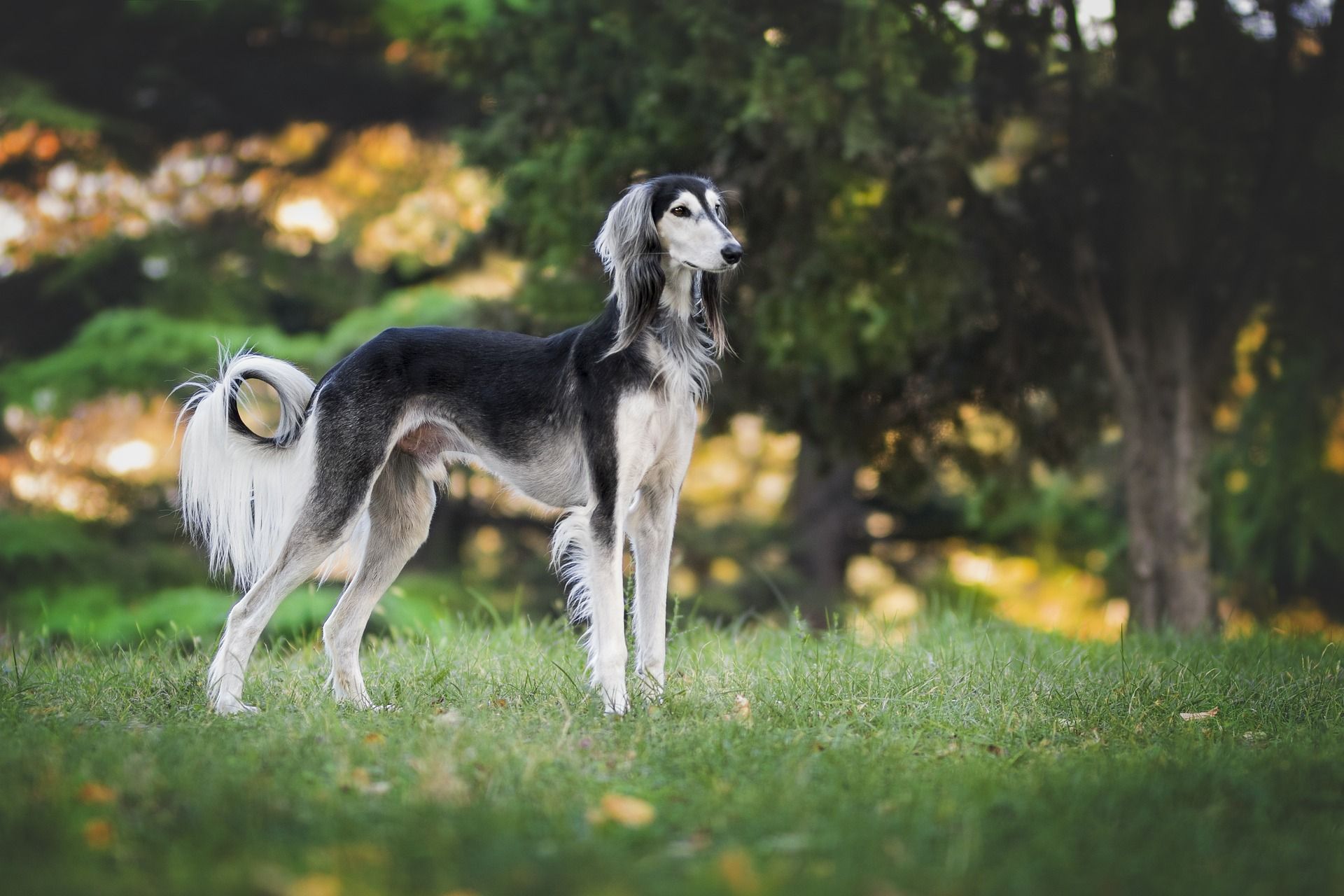The Saluki: A Slim-Framed, Sleek, Gazelle-Hunter
Reputed to be one of the few breeds that were mummified with the pharaohs of the Sumerian Empire, the Saluki is esteemed in the Middle East for swiftness

Reputed to be one of the few breeds that were mummified with the pharaohs of the Sumerian Empire, the Saluki (named after an ancient city) is esteemed in the Middle East for its swiftness over sand and is used for hunting with falcons. It is not an especially demonstrative or tactile pet and may seem somewhat aloof.
Table of Contents
Origin
Persia
Grouping
Sight hounds
Canine speed-merchants, the sight hounds—or gazehounds as they are sometimes called—are hunting dogs that locate and follow their prey primarily by using their keen eyesight. Streamlined, lightly framed, but powerful, a sight hound in pursuit of quarry moves fast and turns with great flexibility. Many dogs in this group were bred to hunt specific prey.
Breed History
This breed is thought to be one of the most ancient breeds of domesticated dogs. Excavations of ancient settlements (6500 BC, Sumerian empire), and Egyptian tomb carvings of 2100 BC reflect the presence of a distinctly “Saluki type” dog.
They were highly esteemed and mummified remains of this type of dog have been found, attesting to their important status in Egyptian society. Muslim religion classed dogs as unclean, and termed them kelb but the Saluki on the other hand, was termed the “noble one” or El Hor, and accorded sacred status.
Originating in the region that includes Egypt, Arabia, Syria and Persia, and accompanying the Bedouin tribes, the first specimens were brought to England in the year 1840. The smooth (non-feathered) variety of Saluki is very much like the Sloughi dog.
The latter was thought to have originated from the town of Saloug in Yemen. The Saluki likely originated in the town of Saluk, Yemen.
The AKC recognized this breed in 1927.
Physical Characteristics
Height at Withers
Female 22-26” (56-66 cm), male 23-28” (58.5-71 cm).
Weight
Females 31-40 lb (14-18 kg), males 40-55 lb (18-25 kg).
Coat
Their coat is fine and silky, shorter over the body and well-developed feathers are present. Colors include white, cream, golden, red, fawn, grizzle and tan, black-and-tan, and tri-color. A smooth variety of this breed has the same body coat but without the feathers.
Longevity
12 years
Points of Conformation
Long, with a very lean athletic build, exceptionally smooth and graceful bounding movements characterize Saluki dogs. Their ability to accelerate very quickly to speed allows them to be effective in gazelle hunts.
The skull is long and narrow, the stop is not very pronounced, and the nose is either black or liver colored.
The eyes are large, oval and colored dark brown to hazel. The ears are long, pendulous and fine-leathered with very long feathers. The neck is long and muscular, the thorax is somewhat narrow but very deep.
The legs are straight and long. Tarsi are placed low on the hind limb. Feet are moderately arched, with good feathering between the toes. The inner digits can be longer than the outer digits.
The tail is long, tapering, feathered on the underside, and carried in a curve. The back is broad with a slightly arched loin. They normally have prominent hip bones and the caudal rib cage is also clearly evident when they are in fit condition.
Breed Behaviour and Traits
- Very athletic, and require lots of exercise and activity
- Friendly
- Clean, and they enjoy a soft bed inside the home
- Saluki dogs are intelligent
- Training should be started early, and socialization should be emphasized to counteract any nervous or shy/high strung tendencies.
- Introduce them to children, small dogs and household cats early.
- They thrive on close human companionship.
- They are sensitive, and obedience training is strongly recommended.
- Free exercise should only occur in a high fenced enclosure.
- They are somewhat independent minded.
- Though they do not like fetch type activities, they love to chase, so care should be taken to keep small animals such as cats out of their reach.
- Destructive behavior can occur if they become bored.
- Their coat has average care needs and they are average shedders.
- They will alarm bark, but are not considered defense dogs.
- Some recommend a snood, or ear hood to help prevent soiling of hair at mealtime